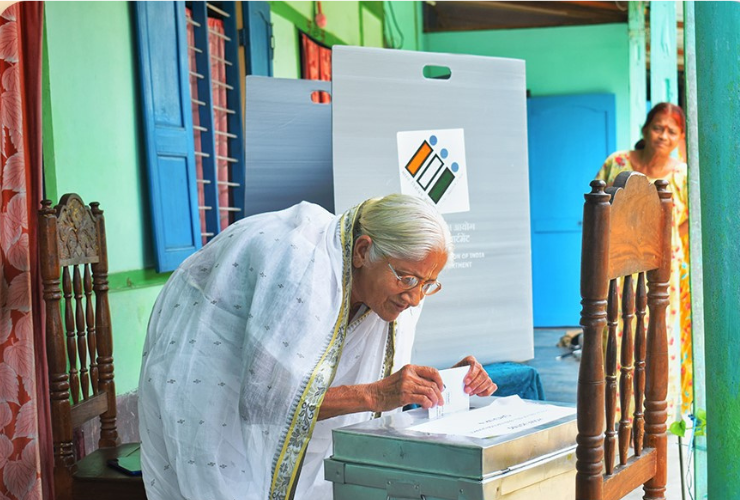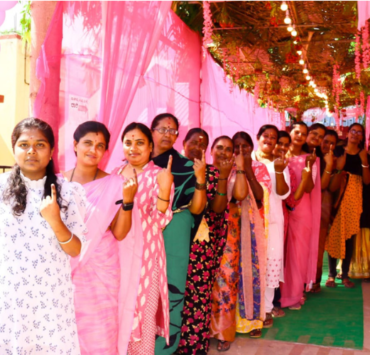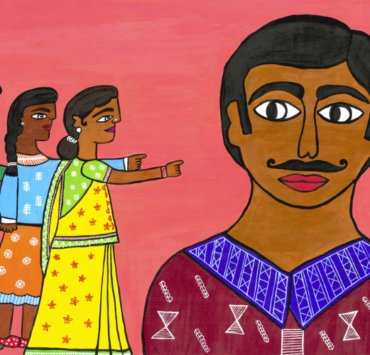
By Durba Ghosh

The number of women candidates has been on the decline since 2014, but women voters are turning out in greater numbers than men.
Promises galore have been made and benefits doled out but in Assam, even as women outnumber the male voters, the representation of women in Parliament has declined. This year, only 12 women are contesting in the ongoing three-phase Lok Sabha elections in the state, which ends on May 7. In the previous Lok Sabha election, there were 14 women candidates for the 14 seats in the state.
Assam has a total electorate of 2,45,72,144, with women outnumbering the men by a small margin of 13,948. The number of women contesting the polls has been on the decline since 2014. The 12 candidates in this election are only contesting in seven of the 14 Lok Sabha seats. Since 2014, both the numbers of women candidates and the number of women getting elected have declined with political parties giving fewer seats to them.
The 12 candidates comprise a mere 8.39% of the total 143 candidates, which indicates that Assam will fail to reach the 33% reservation mark. The Women’s Reservation Bill was passed in Parliament last September, but in the first general elections since, none of the major political parties have made an effort to give tickets to women candidates to help reach the 33% mark.
The Bill is not yet in force, of course, since it is tied to a fresh census and delimitation exercise, which effectively postpones it to some unspecified date in the future but considering the euphoria following its passage, there were expectations that more women candidates would get tickets with the magic figure of 33% achievable in some states.
In Assam, the ruling BJP has given a ticket to only one woman—Bijuli Kalita Medhi for the prestigious Guwahati seat. The opposition Congress has put up two candidates—Mira Borthakur Goswami in Guwahati and Roselina Tirkey in Kaziranga. At three, Kaziranga has the most number of women in the fray, followed by two each in Guwahati and Kokrajhar (ST), and one each in Sonitpur, Darrang-Udalguri, Nagaon, Barpeta and Dhubri.
Among the smaller parties, the Gana Suraksha Party has given tickets to two women, while the Hindu Samaj Party, Gana Sangram Parishad, SUCI(C) and Voters Party have given tickets to one woman each. There are three independents in the fray.
Women’s organizations in Assam had prepared a manifesto for women ahead of the 2024 polls, highlighting the issues to be included in the policies of the next government, but most parties have ignored these and concentrated on doling out sops for women, without any concrete measures for economic, social and political empowerment. The ruling BJP has claimed that no previous government has focused on women as they have during the last 10 years, citing the various benefits they have doled out, including ‘Lakhpati Baideos’ (Lakhpati elder sister) to provide financial assistance for women in self-help groups. The opposition parties, however, allege that the women receive a meagre amount, and are not given opportunities to become self-reliant.
The number of women contesting the Parliamentary polls has been declining, with the highest number of 16 candidates last seen in 2014. This came down to 14 in 2019 and further to 12 in 2024. The total number of women elected to the Lok Sabha since the first general election is 18. This number has also been on the decline—Assam voted two women to Parliament in 2014 and one in 2019.
In 2009, 11 women contested and only two won, while in 2004, four were in fray but none managed to win. 1996 and 1999 each saw nine candidates, but only one and two women won, respectively. In 1991, none of seven candidates could win. There were no women candidates in 1980, 1984 and 1989, while in the first General Elections of 1952, none of the two women candidates won. It was only in 1957 that both women candidates won, while in 1962, two of the three candidates made it to Parliament. Assam sent one woman to Lok Sabha in both 1967 and 1971, and two in 1977.
At the other end of the spectrum, there has been a remarkable increase in the participation of women voters in the polling process. In the first two phases of the 2024 general election, held on April 19 and 26, 79.9% of women came out to vote. In the first phase, held in five constituencies of Upper Assam, women recorded a higher voter turnout of 78.8% as against 77.6% male voters. In the second phase, too, which was also held in five seats, women registered 85.5% votes as against 84.4% by men.
In 2019, women voters registered a record participation of 81.3% as against 79.4% in 2014, 66.8% in 2009 and 65% in 2004. It is always heartening to see the long queues of voters, with the women’s queues snaking longer than the men’s, yet it would be better still if there were more women candidates from which the voters could choose.
Durba Ghosh has been a journalist for over three decades with an avid interest in writing about politics, gender, environment and art and culture. She is currently the bureau head of the Press Trust of India at Guwahati.
Edited by Shalini Umachandran
Related:
Lok Sabha Polls 2024 | Battle royal between two women candidates in Guwahati
Assam Lok Sabha polls: Decline in women candidates but female voters outnumber men




